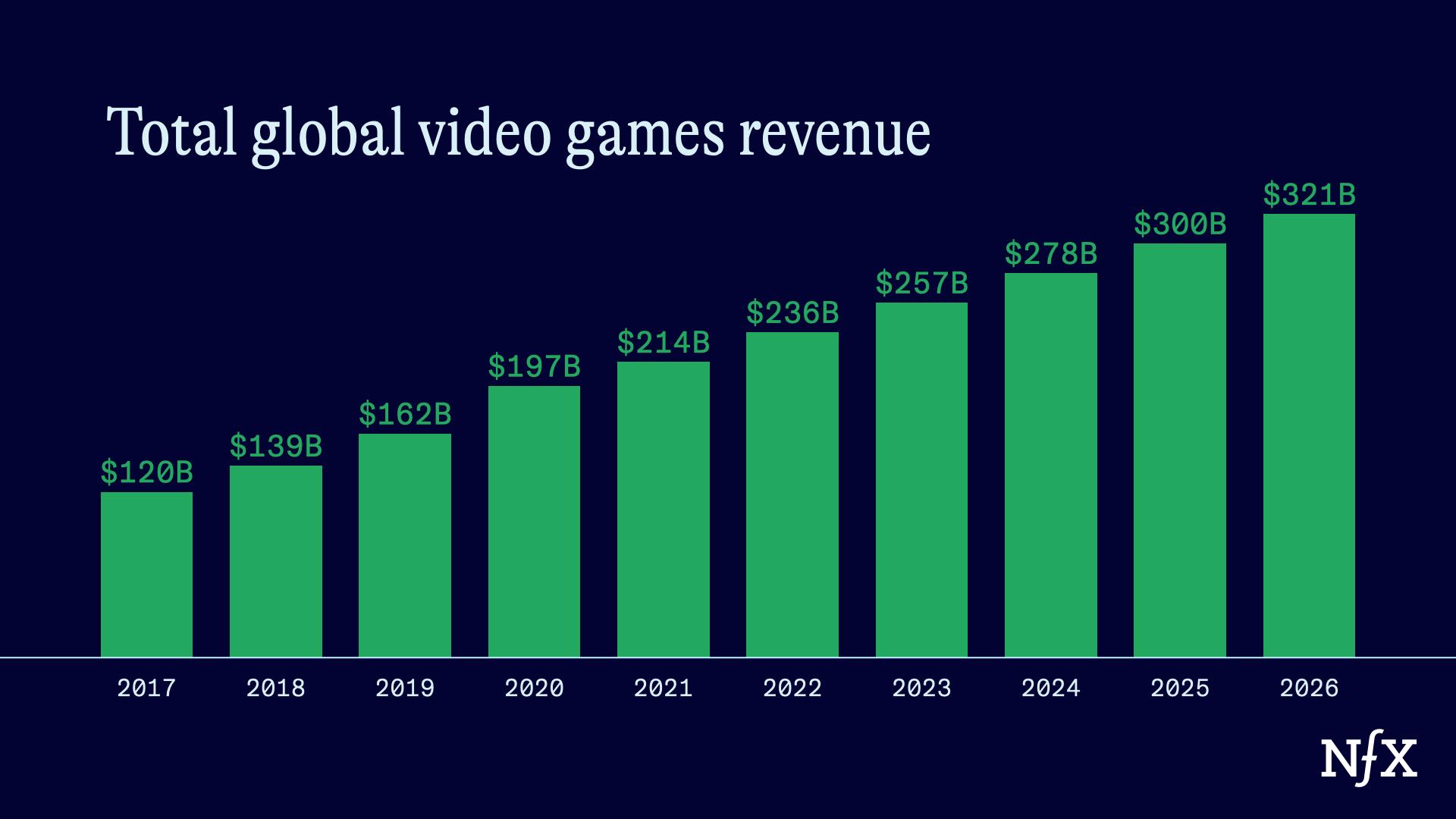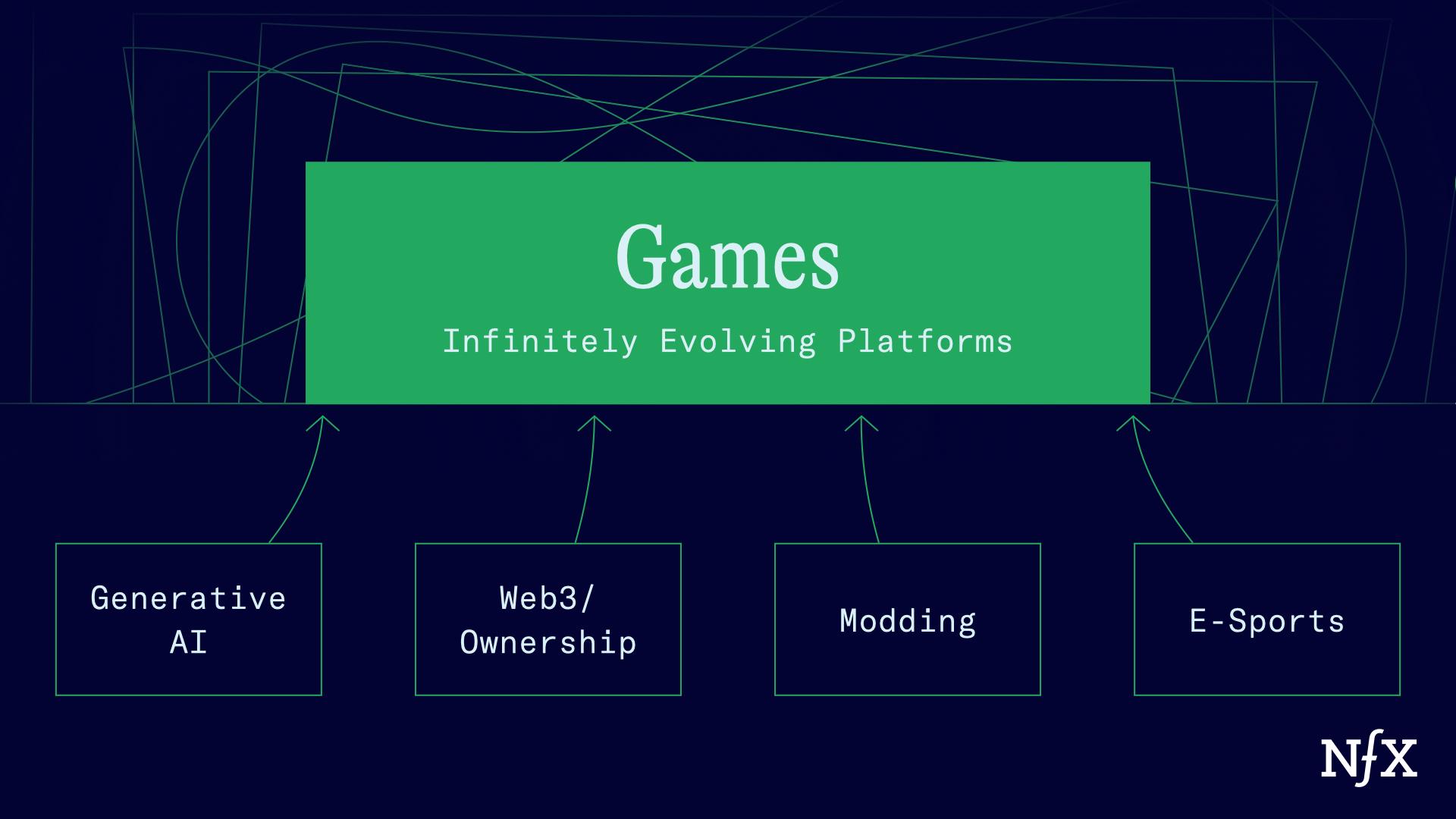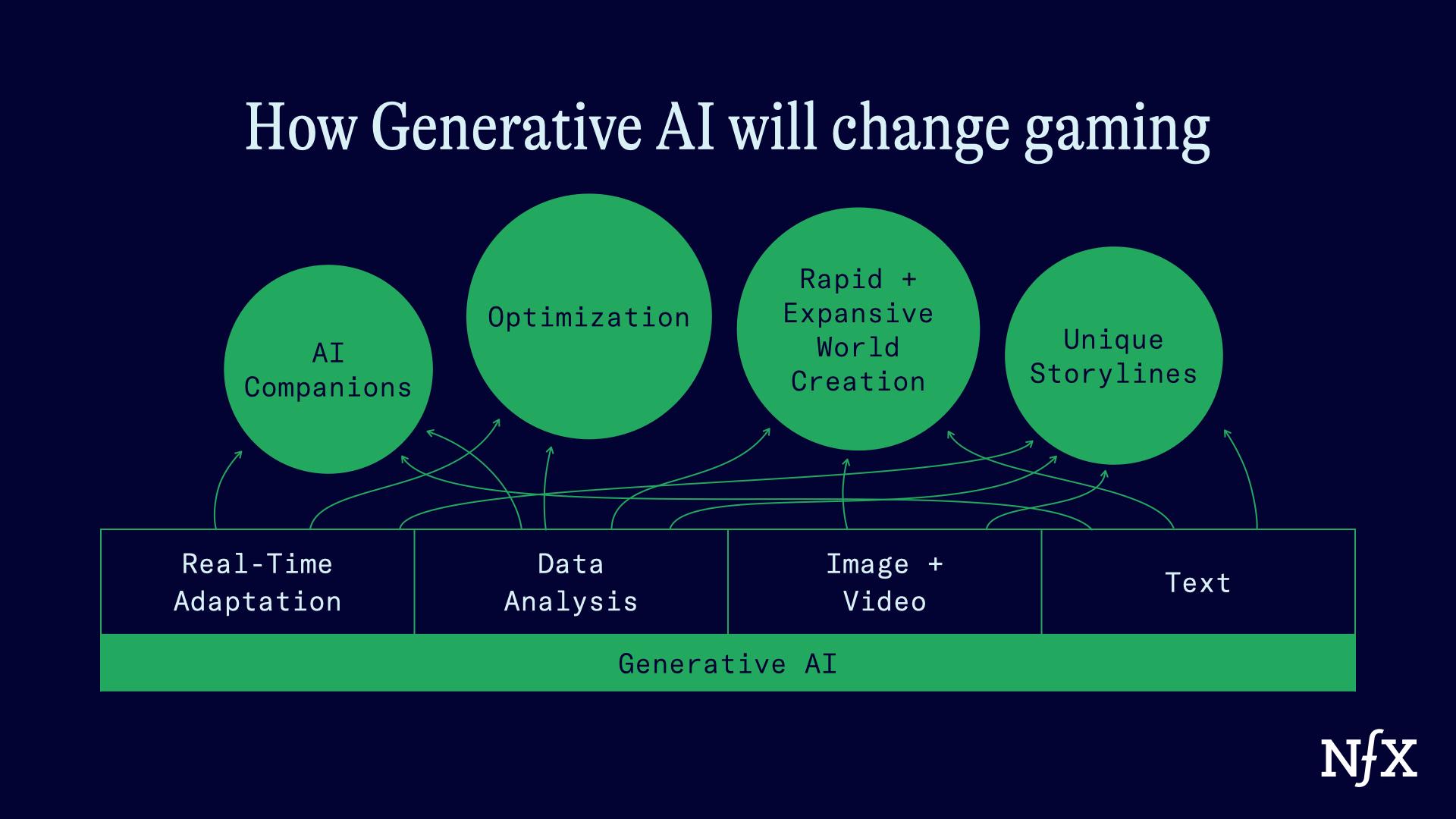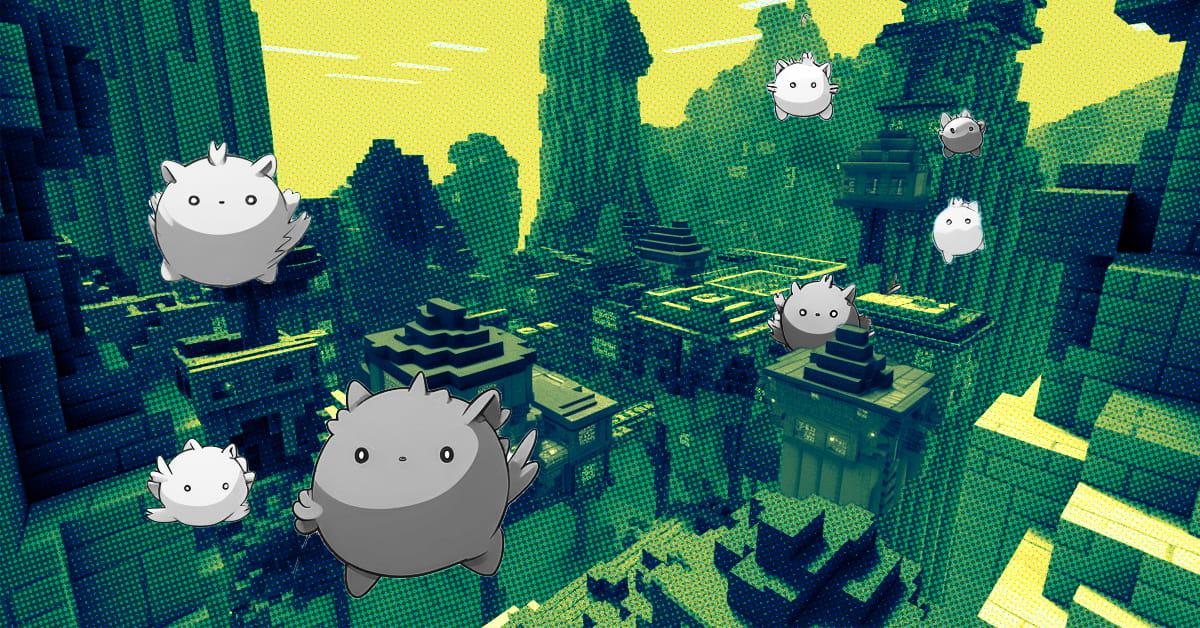

Now is the time to be serious about investing in and building great games.
NFX has been bullish on games from the very beginning. While other investors seem to have lost some interest in the sector, we remain deeply confident in it. We know that games are a strong area where a lot of value can be created in a short period of time.
Let’s get the obvious reasons out of the way.
First, we love games. That’s where I found my first major success, having co-founded Playtika which sold for $4.4 billion. I’ve since invested in more than 10 successful gaming companies like Plarium, Moon Active, Papaya Gaming, Superplay and others. I’ve always played games and enjoy playing today just as much as when I was a kid.
Next, gaming is a massive market that will only continue growing. The growth is easy to see: In 2019, the global gaming market was $152 billion. By 2021, it reached $214 billion and is on track to generate over $300 billion in 2026. Bigger than all other forms of entertainment.
Third, this sector has an unfair number of elite product minds. Games founders and their teams are faster than any other companies we see, and they understand user psychology and delight better than anyone.
But what’s less obvious are the drivers behind the ongoing growth of gaming. There are evergreen attributes unique to games that give them an incomparable ability to grow fast – and there are also exciting new trends to pay attention to. (Generative AI among them).
That’s why we wrote this essay.
It’s an update to our gaming thesis from 2019. It’s an open letter to the world’s next, best games founders. It’s time to play offense. It’s time to make legendary games that will deliver joy to many millions of users.


The global gaming market is on track to top $300B+ in the next 2-3 years. We’re even more bullish when you take the longer view, given the trends we outline in this essay.
Games as a Platform
Back in the early days of gaming, when users bought a game, they bought one experience (often out of a box). They played it through once and were done. With the acceleration of the internet we saw the rise of “games as a platform.”
No longer do game developers create a game and ship it and move on. You can now constantly run updates, analyze user activities, understand what works, offer personalized and live activities, and add new meta game layers. In other words, you can constantly improve and optimize your game.
If you know games, you know this story. But it bears repeating because this is the origin of two advances that are still making games better today than they were even before.


First, games became infinitely evolving platforms.
When you put a game out, that’s just the beginning. Game founders understand you must continue developing and keep adding content, features and live operations. If data tells you that players don’t like a feature, you replace it. If players are getting bored, you add new content. If engagement is not high enough, you create more events and live activities. If the game is slowing down, you add new meta layers that bring the excitement back to the game.
You never stop looking at the data, learning from it, and improving your game. You never stop learning and making your game more fun, more engaging and more exciting.
In fact, that is how all great internet businesses work if they want to continue to grow. All companies need to constantly be moving quickly, testing new features, and learning from their customer behavior. But games must be this way by design. And given they generate so much data and behavioral user feedback, they are just better at this ongoing optimization cycle than companies in any other field.
Second, the internet enabled Live Ops.
Live Ops means you make your game more interesting every day. Sometimes even every hour. It’s not just running daily tournaments or events which open up a new avenue to constantly engage your users. You can create various daily activities that are each great for different types of users so that the game becomes by design better for each user.
Live Ops is the ultimate example of real-time, lightning fast iterations. You build an adjustable and a live ops team can tweak it so that each user gets the best possible experience.
The result of these developments is that games are now constantly evolving live platforms. That’s an extremely strong foundation. It leads to better product-market fit, and a much more personalized customer experience that generates serious customer love.
Data-Driven Live Platforms
For years now, we’ve said that the best games teams always combine data science and creativity. But in recent years the balance has shifted even more toward the data side of things.
Let me be clear. That’s not to say that creative instincts aren’t important. They are. The best games teams are first and foremost creators, and building a game is an art. But the way to optimize any aspect of any game – including some of the creative aspects that have long been seen as “fairy dust” – is through data science.
This is even more true in games than in any other field, because games generate tons of valuable data across all their different modalities.
The companies that were the first to notice this were mobile gaming companies like King, Playtika, and MoonActive. Now that data-driven approach is prevalent in every gaming company, including PC gaming and even in console games which were slowest to adapt this perspective.
Most tech founders don’t measure enough, whereas nearly every gaming founder I meet is relentlessly data-driven. They say: we’re going to launch. We’ll see the data, we’ll measure everything, and optimize it. We’ll do everything required to eventually get to the right KPIs. They are unstoppable.
I love games because they are, at their core, data-driven iteration enterprises, the same way the best tech companies are. Ever since games went online, the ability to constantly gather data and optimize a game has made this space so lucrative and investable. This trend has only accelerated.
On top of these existing and growing trends, we’re also seeing several newer trends that will shape the future of gaming in exciting ways.
Trend 1: Generative AI Changes Everything


Games have long been the frontier playground for AI.
Some of the most basic advances in AI science began in games.
In the 1990s, IBM’s Deep Blue computer defeated world champion Garry Kasparov in a game of chess, paving the way for further advancements in machine learning and AI.
In 2013, Google’s DeepMind used a form of reinforcement learning to train an AI agent to play classic Atari games. The AI was able to learn how to play the games at a superhuman level, demonstrating the potential of AI for game development and other applications.
Then in 2016, Google’s AlphaGo AI defeated world champion Lee Sedol in a game of Go, a complex board game that had long been considered one of the most challenging games for AI to master.
More recently, in 2020, OpenAI used Minecraft as a platform for training an AI model to perform a variety of tasks, including building structures and mining resources. The AI was able to learn from human players and create its own strategies, demonstrating the potential of AI for collaborative problem-solving and creativity.
The culture of games x AI is there.
Games companies are poised to become the biggest early adopters at scale of generative AI. We are already seeing the impact generative AI can have on the games themselves. AI has vastly decreased the costs associated with creation. When creation cost (time, monetary, ideation) goes down, innovation goes up. That decrease in cost will make games more interesting in four ways:
1: Infinite variants: AI will enable n of 1 items, objects, characters. In real time.
In the past, if I wanted to create unique in-game items, like a longsword for instance, I would have to design it, tweak it, optimize it. It took time. If I wanted to develop something more complex, like a forest, I might use a procedural generation tool. But those tools still require a lot of human supervision, don’t learn over time, and can’t generate truly unique content that we see in nature. (Every forest in real life is different). They also don’t capture the language and style of my game, so every time I use them (other than reusing assets), I end up starting all over again.
That’s why it took months and millions to develop in-game items and scenes. Hundreds of millions of dollars at the extreme end of things. Red Dead Redemption took eight years to make, cost over $500 million, and required thousands of hours of labor from musicians, writers, and artists.
Now we have the ability to create design pipelines for text-to-concept art in <60 seconds, or text-to-3D model, using Midjourney and other generative AI tools – saving games companies 25%, 50%, even 75% of costs usually associated with this kind of work. The financial and time costs associated with generating new in-game assets is being substantially decreased thanks to generative AI – which unlocks not just speed, but creative leverage.
It will soon be cost effective (and scalable) to generate not just more items and scenes for all players, but also specific items and scenes for various live ops activities, and eventually even personalized objects and scenes. (Now you can imagine a longsword that’s truly unique to you). It could be fully automated or user-led with generative tech creating the item in the game’s style.
Generative tech will create a wealth of new content that can only make in-game worlds more interesting and more engaging.
While we believe this will happen relatively quickly, the first impact of such creation tools will be (and already are) in the reduction of the cost of game building, allowing creators to move much faster.
2: AI will drive personalized, more creative storytelling
AI makes infinite, personalized storylines cost-effective and scalable.
We’re already seeing just how quickly AI can generate unique and interesting stories.
NFX-backed Latitude is building a text-based engine where you can constantly experience new, unique stories. It’s more complex, but this will happen in video games soon.
Characters won’t say the same script to you every time. Your actions will feel real and have lasting effects because AI-generated stories respond to your actions. And even if you play the same scene with the same action, the outcome storyline can be different each time – from both a content and graphics perspective.
This is a major revolution. If, in the past, we were excited by the shift from scripted progress worlds to open worlds, we will now be moving to fully unscripted worlds. Think about each one of your favorite games: how would it feel if you could play it again and again with the script, character behavior and graphics changing. A new and exciting era!
You will never play the same story twice – and, at the extreme, you’ll never play a story that was written for someone else, if you don’t want to.
Story creation will be faster, cheaper, and unique to the player.
3: AI will drive next-level optimization
Great games companies are already using algorithms for game optimization. But AI’s capacity to analyze data is increasing rapidly. We will generate more data and learn more from it. And as we will have a lot more creation options – more items, more scenes, more stories – we will need next level optimization to ensure that each player is presented with the options best for them.
You might think I’m repeating myself now, but: we are going to be able to make games so much better.
4: AI is going to become a human-like companion
AI is only going to become more responsive to the individual player. Imagine an AI companion that will become upset with you, or console you, or become braver the more you play together. It will change with you over time.
We all like playing with friends, but friends are not always available and are not always willing to take the role we want them to play. AI companions will be friends that we love playing with. Friends that always listen, learn about us over time, and can be replaced with no consequences if we want a new one. We are likely to see such companions in games in the years to come, and can expect them to be strikingly human in their behavior.
And, again, your AI companion will be different from someone else’s because it adapts to your personality and style of play.
As both a gamer and an investor, I get excited imagining this future.
Reducing costs by unlocking creative leverage with Generative AI
Many of our companies such as Azra Games are already using generative tech tools to accelerate their content creation. Azra is pioneering ways to use generative AI to make their game development process orders of magnitude faster, while keeping a high caliber of content quality and game play.
They follow a rapid R&D cycle and do lots of POCs, often starting with a crazy idea or question, trying to get some signal in < 24 hours to see if it’s worth going deeper.
In just a few months, they have built custom tools on top of generative AI models that enable them to speed up and have a new creative companion in their creative design process. Azra has leveraged generative AI to build a Combat Kit Generator, a Character Sheet Generator, even a 2D → 3D Object Generator pipeline. They’re also exploring how generative AI can enable them to create richer, and more personalized dialogue engines in the game.
So far this year, they’ve reduced their concepting costs by > 50%.
The biggest benefit to their gamers is that it reduces the cost to create content, which means gamers can expect to get more value out of the content in the game if they chose to spend money.
Trend 2: Modding on Steroids
Modding is already an active subsection of game culture. But while there are some games that facilitate modding more than others do (Skyrim is the go-to example here), the tools of modding are still early-stage and very specialized.
We expect to see the evolution of newer tools, generative AI-based and otherwise, that will both supercharge existing mod capabilities and make modding easier. This will unlock new content mods (quests, characters, creatures, etc) and gameplay mods (equipment, combat, etc) alike.
This is an entrypoint for more players to become storytellers, but also the option for players to enjoy different versions of the games they love most.
It’s still unclear whether generative tech tools will eventually make modding a subset of the core game development or just reduce the threshold for more creators, but the outcome will surely be more fun for players.
Trend 3: Web3 and Ownership Layer
In addition to leveraging generative AI in their game design process, NFX-backed Azra Games is also creating immersive game universes with a specialized in-game economy and virtual collectibles powered by web3 tech
We are still in the first wave of web3 games. Over the last 2-3 years, we saw many of them focused on play-to-earn. They’re mostly about the money instead of prioritizing fun and engaging gameplay. We are not believers in play-to-earn.
But we do believe that web3 can create a new gaming layer – the ownership layer – and that this layer can make any game better.
How exactly do we see it working? Games are one of the only places where virtual goods have been commonplace for decades. Games contain real virtual economies that already generate billions in revenue. You can buy knives in Counter-Strike for between 100s and 1000s of dollars – and that’s not even a knife that’s unique to you (a new capability opened up by Generative Tech).
As it stands, those virtual goods are still stored on a central server (for example on Steam’s servers). But web3’s blockchain architecture allows users to truly own those personalized virtual goods. This is important for two reasons:
First, it allows users to really own their virtual goods. No one can block them from selling it or gifting it.
Second, it allows other developers to decide to accept these virtual goods into their games.
This is not possible today but is a capability users would love. Today’s large game developers are not crazy about this, because a players’ investment in virtual goods that can only be used in one game creates lock up. With web3 ownership, any developer can decide to accept virtual goods from other games.
Web3 ownership layers have not become big yet within any of the major games. But we are sure it will eventually be a part of the games ecosystem for a simple reason: It’s better for gamers, and it’s an area of opportunity for new gaming companies. It may not start with the major games, but it will eventually get there.
Already, we’re seeing the next generation of gaming companies embrace these ideas. Azra Games has already combined great gameplay with web3 technology to allow players to truly own their in-game items. It unlocks an entirely new way to engage with in-game economies and become immersed in a virtual world.
To be clear: the road is still long. Users will not necessarily want to use external wallets and will definitely not want to pay gas fees. But the infrastructure for adding web 3 ownership on top of games is improving daily. Companies like NFX portfolio company Xternity are creating specialized web3 gaming infrastructure platforms that are plug and play. Soon, it will be operationally seamless to integrate web3 into an already great game.
And that’s the (unsurprising, but worth reminding) big takeaway: you need to build a great game first. We don’t expect everyone to become very interested in web3 elements within games, but it should further enhance amazing gameplay for those that do.
Trend 4: E-Sports for the Masses
Esports is already one of the fastest growing segments of the gaming industry.
For the last 20 years, the rise of the internet and online multiplayer gaming has enabled players from all over the world to compete against each other in real-time. This paved the way for the emergence of online gaming leagues and tournaments like Major League Gaming (MLG) and the Electronic Sports League (ESL), which provided a platform for players to compete at a professional level and for fans to watch and follow their favorite players and teams. The rapid growth of social media and video sharing platforms, such as YouTube and Twitch, also played a role in the rise of esports.
In recent years, esports has become a multi-billion dollar industry. There’s already a robust professional level e-sports environment, with professional teams and players competing for large prize pools in front of sold-out crowds in stadiums and arenas around the world.
We’re now seeing expansion of the esports opportunity in a few ways.
First, we see aspects of the professional esports ecosystem leak down to lower levels of play. Think: betting platforms on amateur games, for example. Or our own Papaya Gaming that turns even the simplest, most casual games like Solitaire into a competitive multiplayer experience that attracts millions of players.
Second, this evolved ecosystem is entering many different genres of gaming across a variety of skill levels. While traditional esports genres such as MOBAs and first-person shooters continue to dominate the competitive gaming landscape, we’re seeing more mainstream appeal via sports games like FIFA and Madden, fighting games like Street Fighter, racing games like Gran Turismo, and even Card games such as Hearthstone and Magic: The Gathering have gained popularity as esports titles in recent years.
Additionally, more traditional media outlets like ESPN and the BBC are now covering esports events, and major brands are increasingly investing in esports sponsorships and partnerships.
Layer on to this the technological infrastructure that constantly improves (like cloud gaming, improving analytics, possibly VR, etc) and you have an ecosystem poised for continued growth.
Also Watch: AR/VR Platforms
This trend isn’t as developed as the rest of the points above, but keep an eye on it.
These experiences still lag far behind what people expect. But there is movement. With the launch of the Meta Quest (Oculus) Pro and the anticipation of Apple Glasses, we could soon see real progress in virtual and augmented reality.
We’ll see it first in business case applications, like training, field services, and collaboration. That’s the beginning of the shift that will eventually lead these devices toward mass market price points and use cases.
We are not projecting most gamers will move to AR or VR in the coming couple of years – but we will see usage grow and more successful games emerge.
Looking Forward: Innovation in Games Will Influence Other Industries
The outcome of being data-driven, iterating, and optimizing the game for the individual player is that this industry will spearhead progress in two major areas of interest: Interactive Entertainment, and The Metaverse.
These are not specific projections, but a realization: if you believe that these industries will be worth hundreds of billions (as many already do) – you should also believe that game companies will be worth a lot more than they are today.
1. Interactive Entertainment
For decades, we’ve been seeing the line between watching and playing become blurred. We have seen increasing experimentation here, like Netflix’s non-linear Kaleidoscope or games like Immortality that comprise three fully interactive films as part of the game experience.
That’s exciting, but right now the only place where we truly see meaningful interactive entertainment is in games. They are the best model we have for developing and optimizing interactivity. They’re the tip of the spear for this whole space.
And so when you think about who will be the real winner in truly interactive entertainment – the answer could easily be game companies. Who else is better in telling an interactive story that changes based on the users’ behavior?
2. The Metaverse
There are bullish projections on the Metaverse’s potential. Across e-commerce, entertainment, travel, the metaverse is projected to be worth $5 trillion by 2030.
Still, these experiences don’t exist for most people. In gaming, the Metaverse already exists. We already see people form tight connections with one another in games. We see them create new identities, and engage in commerce.
Gaming is the only live – and thriving – lab for metaverse experimentation. The innovations the metaverse needs will begin in gaming and flow elsewhere.
We’re (Even More) Bullish on Gaming
We’ve always been bullish on gaming. Today, we are still – and even doubly – excited.
First because there’s a culture of greatness that has now penetrated the whole industry. Every great games founder knows that they need to be launching products fast, obsessing over data, and constantly iterating and evolving their platform. It’s an absolute requirement for success. It gives the games teams we invest in an unfair advantage. Investors who know gaming already know this, and the rest of the industry is catching up.
Second, because there are rising trends like generative AI in games, modding, new ownership principles, and (lesser so, but still important) nascent signs of new interactions possible via AR and VR. These are all poised to make massive contributions to the fun and growth of games.
At NFX, we’ve built games before. We see your edge. And we want to help you sharpen it.
Takeaways for Founders
- Games have an incomparable ability to grow quickly.
- Continue iterating fast to make your games better every day. To succeed, you must be relentlessly data-driven. Measure everything, change it quickly. Games have to constantly evolve to survive. As opposed to other tech companies, there are far fewer games companies that linger as zombies for years.
- Use live ops to make the games more fun and more personalized for your users. Ensure you inject as much fun as possible to every minute of gameplay.
- Web3 games are an evolution, not a revolution. Don’t rush to the hype – build a great game and look at what new web3 technologies unlock at the ownership layer
- Games were the original testbed for AI. The culture of games x AI is storied and already in place.
- Generative AI has vastly decreased the costs of content creation (storylines, art, etc) and unlocks new degrees of cost-effective personalization of the gaming experience. Now is the time to get serious about what generative AI can do for your game and more importantly, for your players.
- Games are living laboratories for innovation in the Metaverse and Interactive Entertainment. Games are the frontier playground.
As Founders ourselves, we respect your time. That’s why we built BriefLink, a new software tool that minimizes the upfront time of getting the VC meeting. Simply tell us about your company in 9 easy questions, and you’ll hear from us if it’s a fit.


